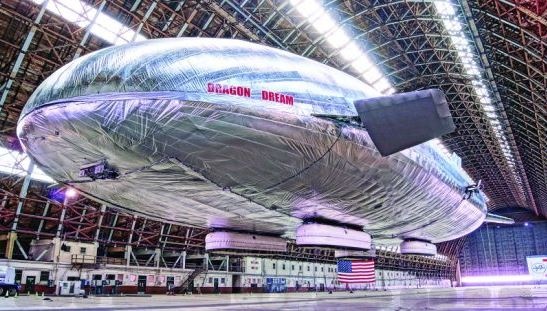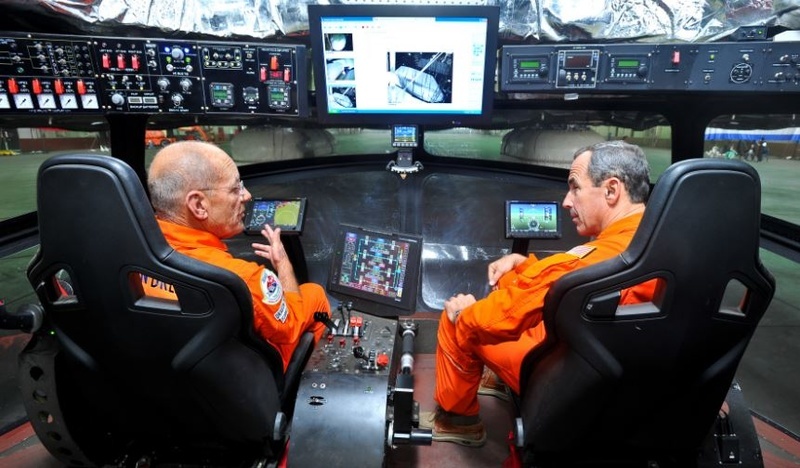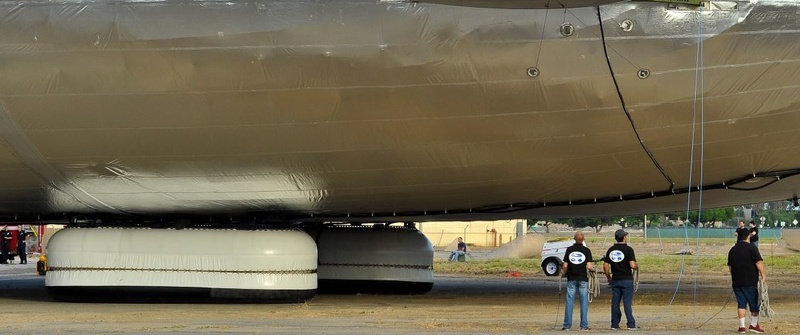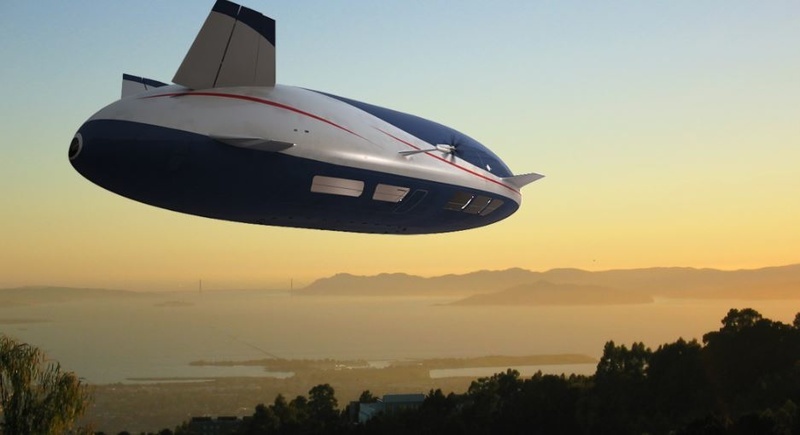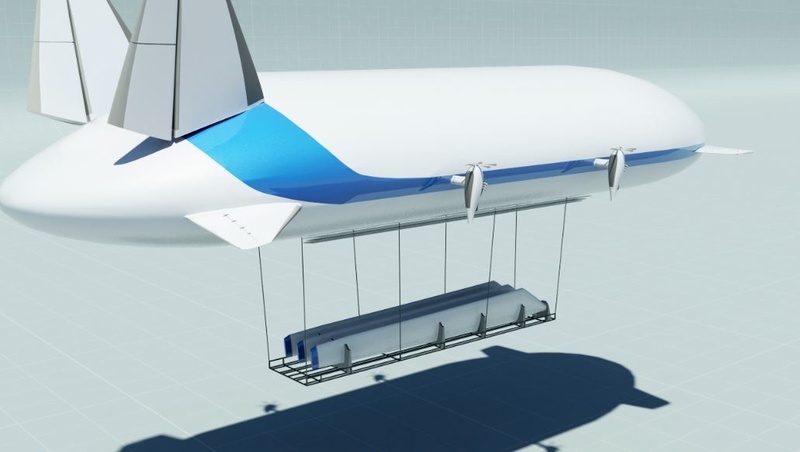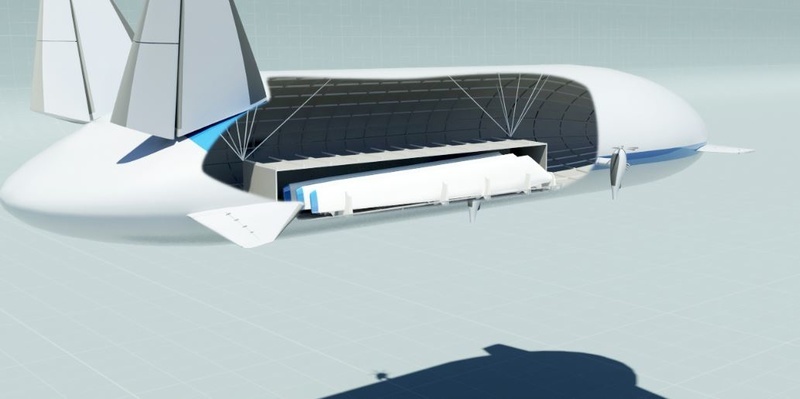Editor's Choice - The Aeroscraft for wind blade transportation
The wind business is ultimately a logistics business. Worldwide Aeros Corp. (Aeros), a Southern California-based international aircraft company, is proposing that its logistics product, the Aeroscraft, will provide wind power components manufacturer a more cost efficient solution for delivering current turbine products, as well as larger scale turbine components, from production to delivery site.
Aeros is a lighter-than-air (FAA-certified) aircraft manufacturing company that does in-house research, development, production, flight and operation of its advanced-technology tethered aircrafts and air vehicles. For the past 25 years, Aeros airships have been used globally for government, commercial and humanitarian applications. Aeros products include the non-rigid FAA type certified Aeros 40D Sky Dragon airships, advanced tethered aerostatic systems and the new type rigid, variable buoyancy air vehicle—the Aeroscraft.
Motivated to become an international provider of advanced transportation solutions, Aeros developed the Aeroscraft that has the ability to carry a large payload of 66 tons to provide a hi-tech aviation vertical solution to moving heavy and oversized cargo, from point-of-origin to point-of-need, even to areas with limited or no infrastructure.
The Aeroscraft is a rigid variable buoyancy airship—a first of its kind—designed to control airlift in all stages of air or ground operations, including the ability to offload its payload without re-ballasting. The Aeroscraft is not a blimp, zeppelin or a hybrid vehicle. It is a new type of aircraft that combines a suite of new aviation technologies.
Obstacles to Wind Turbine Transportation
“The current transportation infrastructure allows the wind industry to expand rapidly,” stated Igor Pasternak, CEO of Aeros, “yet the industry is facing significant transportation problems, which if left unaddressed, will create obstacles to achieving the wind energy industry’s full potential.”
The U.S. wind industry now totals 60,007MW of cumulative wind capacity (and more than 45,100 turbines) through the end of December 2012. The U.S. wind industry has added over 35 percent of all new generating capacity over the past five years, second only to natural gas, and more than nuclear and coal combined, according to the American Wind Energy Association.
The expansion of the wind energy industry has contributed to transportation and logistics issues confronting manufacturers and developers. Moving wind turbine components from the factory floor to the project site is the main challenge of wind industries. It involves handling sensitive and valuable components that can weigh several tons and be well over a hundred feet in length.
As larger-scale blades and bigger turbines are developed—beyond 80 ft in length ranging up to 145 ft—utilizing trucks or helicopters to transport these blades in austere or landlocked territories becomes complex. Blade lengths will continue to grow in the future, particularly for offshore wind projects. The largest blades are over 200 feet long (60 meters-plus) for a 5MW turbine. In this situation, the Aeroscraft with its vertical takeoff and landing capability offers a solution to transporting blades from a manufacturing site directly to the point-of-need-destination.
Moving wind blades from the factory floor to the project site poses another major issue. A single turbine can require up to eight hauls through multiple transportation modes: road, rail, and water. Pasternak believes that “utilizing a vertical solution like the airlift capacity of the Aeroscraft bypasses choke points and uneven or even non-existent infrastructure.”
For environmentally conscious companies, the Aeroscraft is as ecological (in that it uses much less fuel) as it is efficient, offering a virtually noiseless and no-pollution operation. Not only will it be able to haul massive amounts of cargo, it will do so with quiet, electric engines.
Can a Vertical Solution be the Answer?
“It’s a new era for logistics in cargo. Transportation is our first aim for the Aeroscraft,” said Fred Edworthy the Vice President of Aeros. ‘It’s impossible to get into some of the resource rich areas of the world. Areas of the far north or the Amazon are examples.” He explained that the Aeroscraft’s rigid aeroshell and internal ballast control system provides its distinctive use of off-board ballasting, as well as off and on-loading capacity while hovering that can truly benefit the transportation of wind turbines.
Pasternak, who is also the engineer behind the Aeroscraft, said that it can potentially overcome several wind blade transportation limitations. Traditionally, airships and blimps have provided a broad range of services which include surveillance, advertising, broadcasting and communication missions. However, they have considerable limitations in transporting cargo because they require ballast to keep them grounded once cargo is offloaded.
Moreover, they have a non-rigid structure which is prone to puncture. Another obstacle conventional and hybrid airships face is the inability to control buoyancy. The requirement for ballast exchange, ground infrastructure and need for runways significantly limits the usefulness of the vehicles for cargo applications.
“The Aeroscraft can address the transportation challenges of the increasing size of wind turbine systems,” Pasternak said. This aircraft will be able to, vertically and internally in its cargo area, transport large-scale, 10MW-plus wind blades and other components to any destination in the world. Pasternak maintains that the Aeroscraft’s fuel efficiency and ability to circumvent all manner of obstacles make it an economical and viable solution to wind turbine transportation.
The Aeroscraft Prototype’s Technologies
The Aeroscraft is unique because of its Internal Ballast Control system, allowing it to offload cargo without ballast. The Aeroscraft can control lift at all stages with its Vertical Takeoff & Landing (VTOL) means, and can carry maximum payload in hover-mode. It is also built with rigid, carbon composite shell, making it sturdier and better able to carry payloads. The Aeroscraft needs no hangar facility, airport or excessive maintenance.
The first version of the Aeroscraft recently reached completion. Funding and oversight of the Aeroscraft Project has been supported by the Defense Advanced Research Projects Agency (DARPA), the U.S. Defense Department Defiance’s Rapid Reaction Technology Office, and the National Aeronautics and Space Administration (NASA).
The massive 260-foot length prototype Aeroscraft (a subscale of the planned 66 ton ML866 model) was built to prove its scalability— was designed by the LTA (Lighter than air) and aeronautical engineers. Recently in a series of controlled tests, the Aeroscraft vehicle has demonstrated its ability to operate without land infrastructure and ground crew, interfacing with remote as well as with onboard cockpit controls.
The prototype also demonstrated the control of static heaviness, or COSH, a system that allows direct management of the vehicle’s buoyancy. When the airship is on the ground, this system pumps helium into helium pressurization envelopes.
Ambient air will fill portions of the internal structure of the airship and the vehicle will become heavier than air. This allows it to the offload of cargo without having to onload ballast (weight) to keep the airship on the ground. The COSH system will release the helium from the pressurization envelopes in preparation for flight, allowing the vehicle to become lighter than air and enabling vertical takeoff, Pasternak explained.
Austere terrain and isolated environments remain reachable only in the developed transportation periphery. Reaching places from Western Alaska to rural India demands a vertical airlift solution with the ability to bypass infrastructure. The Aeroscraft could be the future airlift freight solution for wind turbine transportation with its key features:
- Vertical Takeoff and Landing (VTOL) capability that allows operation without ground infrastructure and from unimproved landing sites.
- Advanced Buoyancy and Low Speed Control System that enables aerial loading and offloading without external ballast.
- Rigid Structure and Large Cargo Compartment designed to overcome the growing weight and length limitations in wind turbine transportation.
- Buoyancy-assisted Lifting System that lowers transportation expense and will reduce the overall cost of Wind Energy
Wind Turbines and the Aeroscraft
The most common turbines being installed at wind farms produce about 2.5MW of electricity and have 164-foot-long blades. At that length, it is difficult to erect them because the pieces often cannot fit on rail cars or highways, if there even are any roads to the farms. Sometimes, special roads have to be built to bring turbines to the site.
Wind turbine design and engineering has progressed to build ever-larger turbine units. The industry has demonstrated that building one larger turbine (7MW-plus) is more economical than building multiple smaller systems (2MW-plus) with an equivalent total power output.
Edworthy suggests the Aeroscraft can limit the construction of roads and ports saving time, resources and the environment and “lowering transportation and logistics costs that will reduce the overall cost of wind energy.” Its internal payload compartment is capable of accommodating multiple blades over 300 feet long, and it can be customized to overcome the growing height, weight, width, and length limitations in wind turbine transportation.
According to AWEA, the fourth quarter of 2012 saw 8,380MW of wind power capacity installed, bringing total 2012 installations to 13,124 MW, which equated to over 5,000 turbines, resulting in approximately 40,000 transportation hauls.
A single turbine can require up to eight hauls (one nacelle, one hub, three blades and three tower sections). For an entire project of 150MW, transportation requirements have been as much as 689 truckloads, 140 railcars, and eight ships to the United States. And, many projects today are much larger than 150MW (the largest operating project in the U.S. is currently 736MW, and projects of more than 4,000MW are in the early stages of development).
The major transportation challenges for wind turbines include trucking with overhead objects, height requirements, and weight limits; varying state and local regulatory system under which the trucking industry operates; limited carrier capacity and non-optimized loads and scheduling. Train transport is lacking due to dimension limitations; and lack of access to final project sites. Water and shipping transportation is limited to as there is no access to final delivery sites. The Aeroscraft can gain direct access to remote areas and eliminate costly intermodal challenges.
The Aeroscraft vehicle can also prevent blade damage that is caused sometimes during the current intermodal transportation. Aeros has proposed a customized cargo vehicle for the wind industry with an internal compartment design that accommodates multiple blades over 400-plus feet long and other turbine components. The compartment would be comprised of:
- Rear Cargo Bay Entrance/Exit that allows for convenient ground loading/offloading and maintenance access.
- Payload Cradle Platform with restraint system that provides stability and protects against a combination of static, dynamic, and stochastic loads.
- Base Hatch and Tension Wire System, along with the vehicle internal buoyancy and low-speed control system, that enables aerial loading/offloading, turbine installation and maintenance.
Before takeoff, blades and other payload would be loaded by its rear cargo bay entrance and secured by the restraining system on the cradle platform. The Aeroscraft could takes off vertically and during the whole flight, the equipped active attitude control system keeps the platform level to minimize the strain and damage. At arrival, the Aeroscraft can ascend vertically, open the base hatch, extend the tension wire, and unload the payload. It can also work as a crane to assist installation and maintenance.
The company is currently in discussions with leading companies in the wind turbine industry who are seeking to streamline logistics for the transport of large components that cannot be transported intact across normal highway or air corridors. The Aeroscraft heavy-airlift air vehicle can potentially change the way wind turbines are transported, offering a viable vertical solution. Image 8
Aircraft experts and several U.S. agencies are betting that the Aeroscraft vehicle with its advanced technology capacities can transform the transportation of large and heavy cargos, supporting and altering any number of the world’s equipment-dependent mega-projects and the industries that manage them – including wind energy, aerospace, petroleum, highway construction, engineering and telecommunications.
- Source:
- Worldwide Aeros Corp.
- Author:
- Edited by Trevor Sievert, Online Editorial Journalist / by Sadia Ashraf
- Email:
- ts@windfair.net
- Link:
- w3.windfair.net/...

